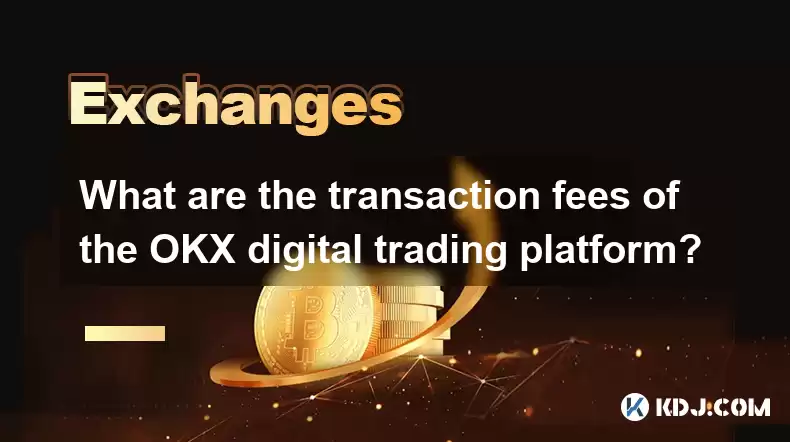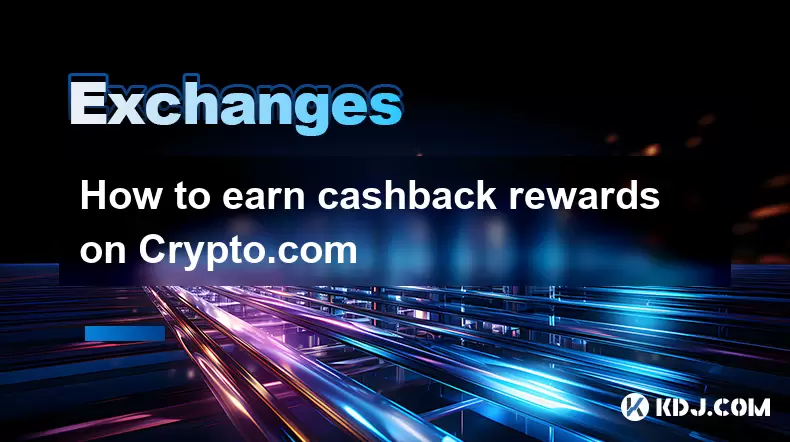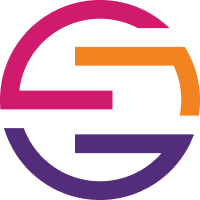-
 Bitcoin
Bitcoin $119000
-2.21% -
 Ethereum
Ethereum $4315
1.01% -
 XRP
XRP $3.151
-3.11% -
 Tether USDt
Tether USDt $0.0000
0.00% -
 BNB
BNB $808.5
-0.71% -
 Solana
Solana $175.8
-4.21% -
 USDC
USDC $0.9999
0.00% -
 Dogecoin
Dogecoin $0.2250
-3.92% -
 TRON
TRON $0.3469
1.77% -
 Cardano
Cardano $0.7818
-3.81% -
 Chainlink
Chainlink $21.47
-2.10% -
 Hyperliquid
Hyperliquid $43.30
-6.81% -
 Stellar
Stellar $0.4370
-2.84% -
 Sui
Sui $3.682
-4.40% -
 Bitcoin Cash
Bitcoin Cash $590.8
2.67% -
 Hedera
Hedera $0.2484
-5.20% -
 Ethena USDe
Ethena USDe $1.001
0.00% -
 Avalanche
Avalanche $23.10
-4.29% -
 Litecoin
Litecoin $119.2
-3.96% -
 Toncoin
Toncoin $3.409
0.90% -
 UNUS SED LEO
UNUS SED LEO $9.016
-1.29% -
 Shiba Inu
Shiba Inu $0.00001304
-3.82% -
 Uniswap
Uniswap $11.18
1.33% -
 Polkadot
Polkadot $3.913
-3.51% -
 Cronos
Cronos $0.1672
-3.08% -
 Dai
Dai $1.000
0.02% -
 Ethena
Ethena $0.7899
-4.70% -
 Bitget Token
Bitget Token $4.400
-1.23% -
 Pepe
Pepe $0.00001132
-5.93% -
 Monero
Monero $257.9
-6.44%
What are the transaction fees of the OKX digital trading platform?
OKX's dynamic fees depend on trading volume, pair, and trading type (spot, margin, futures). A maker-taker model rewards liquidity providers, and a tiered VIP system offers volume-based discounts; withdrawal fees also apply.
Mar 06, 2025 at 03:06 pm

What are the transaction fees of the OKX digital trading platform?
Key Points:
- OKX's fee structure is dynamic, varying based on several factors including trading volume, trading pair, and whether you're using spot trading, margin trading, or futures trading. There's no single, universally applicable fee.
- The platform offers a maker-taker model, rewarding users who add liquidity to the order book (makers) with lower fees than those who remove liquidity (takers).
- OKX provides a fee calculator and detailed fee schedules on their website, allowing users to estimate costs before executing trades.
- Specific fees for various trading types (spot, margin, futures, perpetual swaps) differ significantly and depend on your trading tier (VIP levels based on trading volume).
- There are additional fees to consider beyond trading fees, including withdrawal fees for transferring cryptocurrencies off the platform.
Understanding OKX's Transaction Fee Structure:
OKX employs a tiered fee system, meaning that the fees you pay depend on your trading volume over a specific period. The more you trade, the lower your fees generally become. This incentivizes high-volume traders to remain on the platform. This system is designed to reward active users and maintain market liquidity. The tiered system is applied separately to spot trading, margin trading, and derivatives trading (futures and perpetual swaps).
- Spot Trading Fees: Spot trading refers to the immediate exchange of one cryptocurrency for another. OKX's spot trading fees are determined by a maker-taker model. Maker orders are those that add liquidity to the order book (limit orders placed at prices better than the current market price). Taker orders are those that remove liquidity (market orders or limit orders that execute against existing orders in the order book). Maker fees are generally lower than taker fees. The exact percentage for both maker and taker fees will fluctuate based on your trading volume and the specific cryptocurrency pair involved. Higher trading volumes unlock progressively lower fees, moving you up the VIP tiers. Furthermore, certain pairs might have slightly adjusted fees compared to others. It's crucial to check the OKX fee schedule for your specific trading pair to get the most accurate information. The fee schedule is regularly updated, so always refer to the most current version available on their website. Beyond the basic maker-taker structure, OKX may also offer occasional promotional periods with even lower fees or fee rebates for specific trading pairs or activities. Staying informed about these promotions can significantly reduce your overall trading costs. It's advisable to regularly monitor OKX's announcements and news sections. Failure to do so might result in missing out on potential cost savings.
- Margin Trading Fees: Margin trading allows users to borrow funds to amplify their trading positions. OKX's margin trading fees comprise two components: trading fees (similar to spot trading, based on a maker-taker model and your VIP level) and interest fees on borrowed funds. Interest rates on borrowed funds can vary depending on the cryptocurrency borrowed, the loan term, and prevailing market conditions. These interest rates are typically expressed as an annual percentage rate (APR), but the actual interest charged is calculated daily based on the amount borrowed and the duration of the loan. It's important to factor in both trading fees and interest fees when evaluating the overall cost of margin trading on OKX. Understanding the interplay between these two cost components is vital for effective risk management. Failing to account for interest charges can lead to unexpected losses, especially during extended periods of leveraged trading. Before engaging in margin trading, carefully review OKX's margin trading terms and conditions, including the specific interest rates applicable to your chosen cryptocurrency and loan parameters.
- Futures and Perpetual Swaps Fees: Trading futures and perpetual swaps on OKX involves a slightly more complex fee structure. Similar to spot and margin trading, a maker-taker model is employed, with maker fees generally lower than taker fees. However, these fees are often expressed in terms of a small percentage of the contract value, rather than a percentage of the traded amount. The exact fees depend on your trading volume, the specific contract, and your VIP level. Additionally, funding rates apply to perpetual swaps, which are essentially perpetual futures contracts. Funding rates are payments made between long and short positions to keep the price of the perpetual swap contract aligned with the underlying spot price. These rates can be positive or negative, meaning you may receive payments or make payments depending on the market conditions and your position. The funding rate is typically calculated every eight hours. OKX clearly displays the current funding rate for each perpetual swap contract, allowing you to factor this cost into your trading strategy. Understanding funding rates is crucial for successful perpetual swap trading, as unexpected funding rate changes can significantly impact your profitability. Ignoring funding rates can lead to unforeseen losses, even if the underlying price moves in your favor.
- Withdrawal Fees: Beyond trading fees, OKX charges withdrawal fees for transferring cryptocurrencies off the platform. These fees vary depending on the cryptocurrency being withdrawn and are designed to cover the network fees associated with the transaction. The specific withdrawal fee for each cryptocurrency is clearly stated on OKX's website. It's crucial to factor in withdrawal fees when planning cryptocurrency transfers, as these fees can vary significantly between different cryptocurrencies. Some cryptocurrencies have relatively high network fees, resulting in higher withdrawal fees on OKX. It's important to carefully consider these fees before initiating a withdrawal to avoid unexpected deductions from your balance.
- OKX VIP Program and Fee Discounts: OKX offers a VIP program that grants users significant discounts on trading fees. The higher your trading volume, the higher your VIP level and the greater your fee reductions. The VIP program is designed to incentivize active trading on the platform. Reaching a higher VIP level unlocks access to a wider range of benefits, including dedicated account managers and improved customer support. To qualify for a higher VIP level, you need to maintain a certain trading volume over a specified period. The specific requirements for each VIP level are clearly outlined on the OKX website. The benefits of the VIP program can be substantial, significantly reducing your overall trading costs. Regularly reviewing your trading volume and aiming for higher VIP levels can lead to considerable savings over time.
FAQs:
- Q: Are OKX's fees competitive compared to other exchanges?
- A: OKX's fees are generally competitive, especially for high-volume traders who can access lower fees through the VIP program. However, direct comparison requires checking the fee schedules of other exchanges for your specific trading pairs and volume.
- Q: How often are OKX's fees updated?
- A: OKX updates its fee schedule regularly. It's best to check their website for the most up-to-date information before executing any trades.
- Q: Can I see my estimated fees before placing a trade?
- A: Yes, OKX typically provides an estimated fee calculation before you confirm your trade.
- Q: Are there any hidden fees on OKX?
- A: OKX is transparent about its fees. While there might be unexpected fluctuations based on market conditions (like funding rates in futures trading), there shouldn't be any hidden or undisclosed charges.
- Q: What happens if I don't meet the requirements for a specific VIP level?
- A: If you don't meet the requirements, you'll be placed in a lower VIP tier with higher trading fees. Your VIP level is reviewed periodically based on your trading volume.
- Q: How do I check my current VIP level?
- A: You can usually find your VIP level information in your OKX account dashboard.
- Q: Are there any circumstances where OKX might waive fees?
- A: OKX occasionally runs promotions offering fee discounts or waivers for specific events or trading pairs. These promotions are usually announced on the platform's website and social media channels.
- Q: What should I do if I have a dispute regarding transaction fees?
- A: Contact OKX's customer support for assistance in resolving any fee-related disputes. Providing clear documentation of your trades is important.
- Q: Can I negotiate fees with OKX?
- A: While individual fee negotiation isn't typically an option, reaching higher VIP levels based on increased trading volume provides significant fee reductions.
- Q: Are there any circumstances where OKX might charge additional fees beyond those listed on their website?
- A: It's highly unlikely. Any additional charges should be clearly stated and explained beforehand. If you encounter unexpected charges, contact customer support immediately.
Disclaimer:info@kdj.com
The information provided is not trading advice. kdj.com does not assume any responsibility for any investments made based on the information provided in this article. Cryptocurrencies are highly volatile and it is highly recommended that you invest with caution after thorough research!
If you believe that the content used on this website infringes your copyright, please contact us immediately (info@kdj.com) and we will delete it promptly.
- Circle Stock, Blockchain, and Strong Earnings: A Bullish Outlook
- 2025-08-12 22:30:12
- Nexchain, Crypto Presale, and Rankings: What's the Buzz?
- 2025-08-12 22:30:12
- Arc Blockchain: Circle's Layer-1 Play Amidst $428 Million Loss
- 2025-08-12 20:30:13
- XRP Price: Riding the Bull Cycle Wave or Hitting a Wall?
- 2025-08-12 20:50:12
- Cloud Mining in 2025: Chasing Passive Income and High Returns
- 2025-08-12 20:30:13
- XRP Price Forecast: Can XRP Hit $8, $12.60, or Even $100? Surge Drivers Analyzed
- 2025-08-12 21:10:13
Related knowledge

How to use margin trading on Poloniex
Aug 08,2025 at 09:50am
Understanding Margin Trading on Poloniex

How to read the order book on KuCoin
Aug 10,2025 at 03:21pm
Understanding the Order Book Interface on KuCoinWhen accessing the order book on KuCoin, users are presented with a real-time display of buy and sell ...

How to read the order book on KuCoin
Aug 12,2025 at 02:28am
Understanding the Basics of Staking in CryptocurrencyStaking is a fundamental concept in the world of blockchain and cryptocurrencies, particularly wi...

How to set price alerts on Kraken
Aug 11,2025 at 08:49pm
Understanding Price Alerts on KrakenPrice alerts on Kraken are tools that allow traders to monitor specific cryptocurrency pairs for price movements. ...

How to earn cashback rewards on Crypto.com
Aug 12,2025 at 02:08am
Understanding Cashback Rewards on Crypto.comCashback rewards on Crypto.com are a feature designed to incentivize users to spend using their Crypto.com...

How to use advanced trading on Gemini
Aug 08,2025 at 04:07am
Understanding Advanced Trading on GeminiAdvanced trading on Gemini refers to a suite of tools and order types designed for experienced traders who wan...

How to use margin trading on Poloniex
Aug 08,2025 at 09:50am
Understanding Margin Trading on Poloniex

How to read the order book on KuCoin
Aug 10,2025 at 03:21pm
Understanding the Order Book Interface on KuCoinWhen accessing the order book on KuCoin, users are presented with a real-time display of buy and sell ...

How to read the order book on KuCoin
Aug 12,2025 at 02:28am
Understanding the Basics of Staking in CryptocurrencyStaking is a fundamental concept in the world of blockchain and cryptocurrencies, particularly wi...

How to set price alerts on Kraken
Aug 11,2025 at 08:49pm
Understanding Price Alerts on KrakenPrice alerts on Kraken are tools that allow traders to monitor specific cryptocurrency pairs for price movements. ...

How to earn cashback rewards on Crypto.com
Aug 12,2025 at 02:08am
Understanding Cashback Rewards on Crypto.comCashback rewards on Crypto.com are a feature designed to incentivize users to spend using their Crypto.com...

How to use advanced trading on Gemini
Aug 08,2025 at 04:07am
Understanding Advanced Trading on GeminiAdvanced trading on Gemini refers to a suite of tools and order types designed for experienced traders who wan...
See all articles

























































































